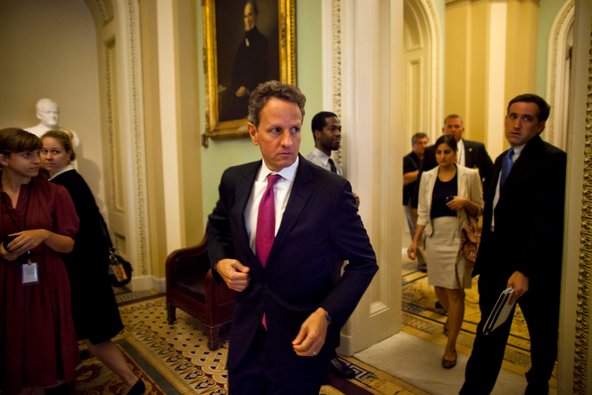These days, the beast has been ravenous for the murder trial of George Zimmerman, the Florida neighborhood watch volunteer who shot and killed Trayvon Martin, an unarmed black teenager. The case was swollen with confusing evidence, Florida’s liberal self-defense laws and deep-seated racial tension. Cable coverage has been round the clock.
While hardly going the way of CNN’s near total obsession, The Times gave the Zimmerman trial a great deal of daily attention, including frequently updated courtroom coverage on the Web.
Decisions about the amount of coverage to give a high-profile trial are always subjective. But it is notable — and it opens The Times to criticism — that this one got the kind of day-in, day-out attention that The Times did not deem worthwhile in a pair of other important cases this year: the trial of the abortion doctor Kermit Gosnell and the court-martial of Pfc. Bradley Manning, who leaked vast amounts of classified government documents. (Although the Gosnell trial did seem to get short shrift at first, I felt it was given adequate coverage by the end. But I have thought all along that the Manning matter deserves more sustained evidence of The Times’s interest.)
The Zimmerman trial coverage was solid. But foremost, The Times has showed its trademark strength with in-depth, enterprising pieces exploring the broader issues of this crime and its aftermath.
Last week, for example, Lizette Alvarez wrote skillfully about the racial issues that had emerged, noting that “race lingers awkwardly on the sidelines, scarcely mentioned but impossible to ignore.” That article appeared on the front page, the first during the trial to do so.
In the first weeks after Mr. Martin was killed, on Feb. 26, 2012, The Times lagged behind, seeming not to recognize the broader implications and the way the teenager’s death had captured public interest. But on April 2 it published an exhaustive and well-written account by four reporters that started on the front page and filled two full pages inside. It explored the polarizing effect of the shooting. Soon after that, a front-page piece by Serge Kovaleski investigated the police missteps after the shooting. (Some critics of The Times believe its motto should not be “All the News That’s Fit to Print” but rather “More, Later.”)
Given the enormous overload of coverage elsewhere, The Times tried to provide something distinctive. Charles Strum, the deputy national editor handling the story, told me that his aim had been “to bring more light than heat, because, over all, this is a situation with more heat than light.” While editing articles in the New York office — most of them written by Ms. Alvarez, the Miami bureau chief — he spent his days wearing headphones so that he could listen to live streaming of the trial.
“There are a lot of accusations, a lot of misinformation and a lot of conspiracy theorizing,” he said.
The smallest points were scrutinized. Why, for example, did The Times use so many descriptions of Mr. Zimmerman’s ethnicity? Michael G. Brautigam of Brooklyn is one of many readers who commented on how The Times described Mr. Zimmerman. He wrote to me: “If memory serves, George Zimmerman has been described in a significantly different way each day of the week.” A week ago Monday he was labeled “half Hispanic,” the next day as “half Peruvian,” a day later as “self-described Hispanic.” Earlier, he was described as a “white Hispanic.”
I asked Ms. Alvarez to explain. “It’s been a struggle all along,” she said. “If he were black or if his name was Rodriguez instead of Zimmerman, this would have been a completely different situation.” The case would not have had its racial flash point, she said. In a nation where a blend of race and ethnicity are more and more the norm, the labeling struggle is an effort to note that Mr. Zimmerman shares in that mixture more than his name alone indicates.
Separately from news coverage, some readers complained about several Op-Ed columns by Charles Blow, finding them one-sided, with a particular complaint about one that appeared on July 3, comparing Mr. Zimmerman’s videotaped re-enactment with his written and spoken statements. Richard Murphy of Fairfield, Conn., wrote: “I realize that Mr. Blow is an opinion columnist, but does The Times really want to put Mr. Zimmerman on trial in its pages? Mr. Blow isn’t reporting, he is deliberately attempting to discredit Zimmerman, to convince people of his guilt.”
I sent this complaint to Mr. Blow and asked him to respond. “I simply raised questions about inconsistencies in George Zimmerman’s accounts of his struggle with Trayvon Martin,” he said.
Looking back over the columns that Mr. Blow has written on the case since last year, I found them generally thoughtful, if clearly sympathetic to the Martin family. The column that Mr. Murphy cited may have come close to the limits of fair comment, taking on a prosecutorial tone. If you believed the medical examiner, the columnist wrote, “the struggle simply couldn’t have happened as Zimmerman described it.” Those kinds of judgments might have been best left to the jury. But columnists are allowed wide leeway, and even in this instance I found Mr. Blow within his rights.
The Times was slow off the mark on this story, and on some early developments, it let the local media break the news. But over all, it has done its job, satisfying interest without sensationalizing, covering the trial with a measured tone, and providing depth and perspective — valuable commodities on a story all too capable of creating hysteria.
Mr. Strum, however, knows there are ways in which any coverage, no matter how thoughtful, must be found wanting.
“This trial brings up all the old pain of every violent racial crime that’s ever happened — with questions of who’s the aggressor, whether a fair trial is possible, whether there is such a thing as equal justice in America,” he told me. “The questions are out there, and unfortunately, they won’t be answered.”

Article source: http://www.nytimes.com/2013/07/14/public-editor/making-sense-of-a-sensational-case.html?partner=rss&emc=rss


